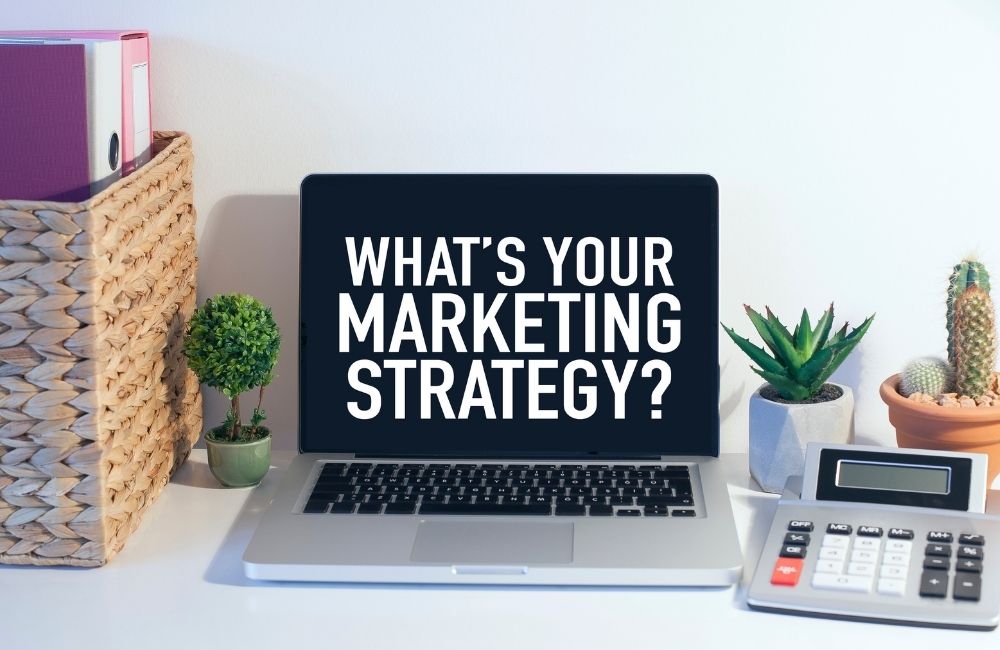Starting an e-commerce business is like embarking on a big adventure in the online world. It’s exciting to think about reaching customers everywhere.
But, not all of these adventures end well. Many e-commerce businesses don’t succeed.
Why is that? Is it because of tough competition, changing customer likes, or maybe something else?
In our guide, we dive into the main reasons why e-commerce businesses fail. We’ll look at common mistakes, like not doing enough research or running into money problems, and show you how to avoid them.
Whether you’re just starting or trying to improve your business, this guide will point you in the right direction.
Contents
1. Lack of Market Research
One big reason e-commerce businesses don’t succeed is they skip doing their homework on market research. Knowing who your customers are, what they want, and what other businesses you’re up against is super important. Without this info, businesses can make big mistakes like choosing the wrong products, setting the wrong prices, or creating ads that don’t get people’s attention.
Think about it this way: to sell something well, you need to make sure it’s something people actually want and need. If you don’t do market research, you’re basically guessing what your customers like, which is risky. Plus, you might end up selling something that lots of other stores are already selling, without any special twist to make your stuff stand out.
Also, by understanding what your competitors are doing, you can find out what’s missing in the market. Maybe there’s something customers wish they had but can’t find anywhere. That’s your chance to be different and grab their attention.
In short, not doing market research can lead to spending money on things that don’t work out, making it hard for your business to succeed. It’s not just about knowing who could buy from you, but really getting what they’re all about. This way, your business doesn’t just sell stuff; it solves real problems for people. That’s how you stand out and do well.
2. Insufficient Marketing and Promotion

Another big reason why e-commerce businesses struggle is not putting enough effort into marketing and promotion. It’s simple: if people don’t know about your great products and cool website, they won’t buy anything. To get customers, you need a good plan to tell them what you’ve got and why it’s awesome.
First, it’s crucial to figure out who your target audience is. These are the people most likely to be interested in what you’re selling. Once you know who they are, you need to find the best ways to reach them. This could be through social media, emails, ads on websites they visit, or even word of mouth.
Your marketing messages should also speak directly to your audience. They need to feel like you understand their needs and have the perfect solution. For example, if you’re selling eco-friendly products, you should highlight how your products help the environment and appeal to people who care about that.
It’s not just about letting people know your business exists; it’s about connecting with them in a way that makes them want to buy from you. This means your marketing strategy should be creative, consistent, and focused on what makes your products unique and necessary for your customers.
3. Lack of Trust and Security

A big hurdle that can trip up an e-commerce business is not making customers feel safe. When people shop online, they share personal and financial information, like their address and credit card number. If they don’t trust your website to protect this info, they won’t buy from you.
To prevent this, your online store needs strong security measures. This means having good technology in place to keep customer information safe from hackers. It’s like making sure your store has good locks and an alarm system, but for online information.
But having these security measures isn’t enough—you also need to tell your customers about them. Make sure your website clearly shows how you protect their information. This can be through security badges, clear statements about your privacy policy, or even customer testimonials about how safe and reliable your site is.
It’s all about building trust. When customers see that you take their safety seriously, they’ll feel more comfortable shopping with you. Without this trust, people might visit your website, but they’ll probably leave without buying anything.
4. Poor Customer Service
Not providing top-notch customer service is another common reason why e-commerce businesses don’t make it. Shopping online is different from walking into a store. Customers can’t just ask someone for help or take a closer look at a product. That’s why they expect even better service when they shop on the internet.
If your customer service isn’t quick, helpful, and friendly, customers will get frustrated. Imagine someone has a question about a product or a problem with an order. If they can’t get a fast and useful answer from you, they’ll probably not want to shop with you again. Worse, they might tell their friends or leave a bad review online, which can hurt your business even more.
So, what does good online customer service look like? It means having a team that can answer questions and solve problems quickly. This could be through email, a chat service on your website, or even on social media. Also, being friendly and understanding goes a long way. Remember, for the customer, every interaction with your service team is a big part of their shopping experience.
5. Bad Website Design and User Experience

A common stumbling block for e-commerce businesses is having a poorly designed website. Since your website is like your online shop, it’s got to be inviting, easy to use, and good-looking. If your site is hard to navigate, slow, or just looks unprofessional, people are likely to leave without buying anything.
Your website’s job is to make visitors feel comfortable and confident. They should easily find what they’re looking for, understand what you offer, and feel secure when they make a purchase. This means having a clean layout, clear navigation, and a trustworthy look. Also, the site should load quickly and work well on both computers and phones.
Creating a strong, trustworthy brand look for your online business is vital. It’s not just about avoiding a bad design; it’s about actively building a site that draws customers in and makes them feel safe and valued. Think of it as creating a welcoming, well-organized store where everyone feels good about shopping.
6. Pricing Issue
Pricing issues can be a major reason why e-commerce businesses fail.
Firstly, being competitive with your pricing is key. Customers often compare prices online before making a purchase. If your prices are much higher than others for the same or similar products, you might lose potential sales. People are always looking for the best deal, so it’s important to know what others are charging and set your prices accordingly.
However, it’s not just about having the lowest prices. If you price your products too low, you might not make enough profit to cover your expenses. Remember, your price needs to cover not just the cost of the product, but also other costs like shipping, marketing, website maintenance, and any staff or services you use.
Finding the right price means understanding both the market and your own costs. It’s a balance between being attractive to customers and ensuring you make enough profit to sustain and grow your business. Sometimes, this might mean experimenting with different pricing strategies to see what works best for your audience and your bottom line.
7. High Shipping Costs

High shipping costs and hidden fees are often why customers abandon their online shopping carts. When customers are surprised by unexpected costs at checkout, it can be a major turnoff, leading them to leave the site without completing their purchase.
Transparency is crucial when it comes to shipping costs. Customers want to know what they’re paying for upfront, without any surprises. If the shipping costs are too high or added at the last moment, it can make customers rethink their decision to buy from you. That’s why it’s essential to be clear and upfront about these costs as early as possible in the shopping process.
Offering free shipping or a flat-rate for shipping can be a great way to attract customers. People love ‘free’ – it’s a powerful motivator. If free shipping isn’t feasible for your business, consider a flat-rate shipping fee. It simplifies the decision for the customer, as they know exactly what they’ll pay, regardless of what or how much they order.
8. Scaling Too Quickly
Growing your e-commerce business too fast is like trying to run before you can walk.
When you scale too fast, you might face cash flow problems. This happens when your expenses increase faster than your sales. Imagine needing more stock, bigger storage, or more staff before the money from sales has come in to pay for these things. This mismatch can put a huge strain on your finances.
Operational challenges are another risk of rapid scaling. As your business grows, you’ll need more complex systems to handle things like inventory, shipping, and customer service. If you grow too fast, these systems might not be able to keep up, leading to mistakes, delays, and frustrated customers.
Quality issues often crop up when a business scales too quickly. It’s hard to maintain the same level of quality in your products or services if you’re suddenly dealing with much larger volumes than before. And if the quality drops, customers might start looking elsewhere.
So, what’s the solution? Grow your business, but do it in a controlled, sustainable way. This means planning your growth carefully, making sure you have the resources to handle it, and always keeping an eye on the quality of your product or service.
9. Not Using Data to Make Decisions

Data, such as website traffic, sales numbers, and customer feedback, is crucial in understanding what works and what doesn’t in your business. For example, tracking website traffic can tell you which products are attracting the most attention or which marketing campaigns are bringing in the most customers. This information is invaluable in making informed decisions about what to focus on.
Sales data is another treasure trove. By analyzing which products are selling well and which aren’t, you can adjust your inventory to better match what your customers want. This helps in reducing costs on unsold stock and focusing on items that are more likely to sell.
Using data helps you make decisions based on actual trends and customer behavior, rather than guesswork. It’s about being smart and strategic with your resources. The more you know about your business and your customers, the better your chances of success.
10. Ineffective Branding
In the crowded world of e-commerce, your brand is what sets you apart. It’s like your business’s personality, and it needs to be strong, clear, and appealing to your target audience.
Your brand is more than just your logo or the colors on your website. It’s the story you tell about your business, the values you stand for, and the experience you promise to your customers. When your branding is clear and consistent across all your platforms – from your website to your social media – it creates a memorable image in the minds of your customers.
Think of the most successful e-commerce businesses. They all have a strong brand that resonates with their audience. Their customers don’t just come to them for their products; they come for the experience and the values that the brand represents.
Whether it’s luxury, sustainability, innovation, or affordability, these brands stand out because they know who they are and consistently communicate that identity to their audience.
11. Cash Flow Problems

Cash flow problems are a major reason why e-commerce businesses struggle or fail. It’s like trying to run a car without enough fuel – eventually, you’re going to stall. Properly managing your expenses – from marketing costs to inventory purchases – is crucial to keep your business running smoothly.
A common mistake is not accounting for all the necessary expenses. It’s easy to focus on the immediate costs like buying products and advertising. However, there are often other expenses that can sneak up on you, like web hosting fees or software subscriptions. If you’re not careful, these can add up quickly and eat into your profits.
Another key aspect is having a solid financial plan. This means tracking every dollar that comes in and goes out of your business. It’s not just about looking at your sales; it’s about understanding your overall profitability. What’s your profit margin on each product? How much are you spending to acquire customers? Are there areas where you can cut costs without impacting quality or customer experience?
Without a clear view of your finances, making informed decisions becomes difficult. You might find yourself in a situation where you’re generating sales but not making enough profit to sustain your business. Or worse, you might run out of money to keep your operations going.
12. Poor Fulfillment and Logistics
Think of fulfillment and logistics as the backbone of your e-commerce operations. If you’re slow to process orders, often ship the wrong items, or deliver goods that are damaged, it can quickly damage your customers’ trust. These issues can lead to a rise in returns and chargebacks, which are costly and harmful to your business’s reputation.
When a customer places an order, they expect a smooth experience: quick processing, accurate delivery, and their items arriving in perfect condition. In a world where same-day or next-day delivery is becoming the norm, taking too long to send out an order can disappoint customers.
To build and maintain customer trust and loyalty, it’s crucial to ensure fast, accurate, and safe delivery of products. Investing in efficient logistics and fulfillment processes is not just about avoiding problems; it’s about providing a great customer experience that encourages repeat business and positive word-of-mouth.
13. Selling Low-quality Products

Selling low-quality products is a fast track to damaging your e-commerce business. When your products don’t meet customer expectations, it can hurt your brand’s reputation and lead to a surge in negative reviews. In the online shopping world, where trust and reputation are everything, this can be disastrous.
Customers shopping online rely heavily on product descriptions and reviews to make purchasing decisions. If they receive something that falls short of what was promised, their disappointment is often shared in the form of negative reviews. These reviews are incredibly influential and can deter potential customers.
Remember, your product is a reflection of your brand. Offering high-quality products that live up to or exceed customer expectations can create a positive, lasting impression. This approach not only helps in retaining customers but also attracts new ones through positive word-of-mouth.
14. Economic Downturns
When the economy weakens, people tend to tighten their belts, leading to decreased consumer spending. This change in consumer behavior can directly impact sales and profitability for online retailers.
During tough economic times, discretionary spending – money spent on non-essential items – is often the first to get cut from household budgets. This means that products considered luxuries or non-essentials might see a decline in sales. E-commerce businesses that primarily sell these types of products can be particularly vulnerable during an economic downturn.
However, it’s not just luxury or non-essential items that are affected. Consumers generally become more price-sensitive and value-conscious during economic downturns. They might spend more time comparing prices, looking for deals, or opting for lower-cost alternatives.
This shift in buying behavior means that e-commerce businesses need to be more strategic about pricing, promotions, and the value proposition of their products.
15. Increased Competition
One of the toughest hurdles for any e-commerce business is standing out in a saturated market. With more and more businesses moving online, the competition can be fierce. This intense competition makes it harder to grab the attention of potential customers and can be a significant reason for failure if not navigated wisely.
In a market crowded with competitors, simply having good products or services might not be enough. Customers have a plethora of options to choose from, which means your business needs something special to stand out. This could be unique products, exceptional customer service, an engaging brand story, or a combination of these elements.
What makes your e-commerce business different from the dozens or hundreds of others out there? Finding and highlighting these unique aspects of your business can help you attract and retain customers even in a crowded marketplace. Standing out in a saturated market demands creativity, a clear understanding of your customer base, and an ongoing commitment to adapt and improve.

